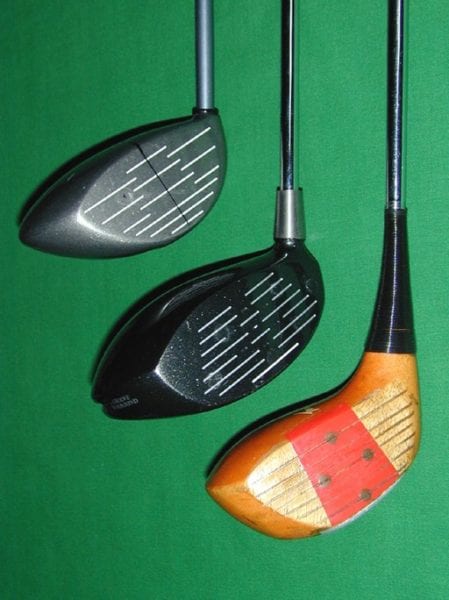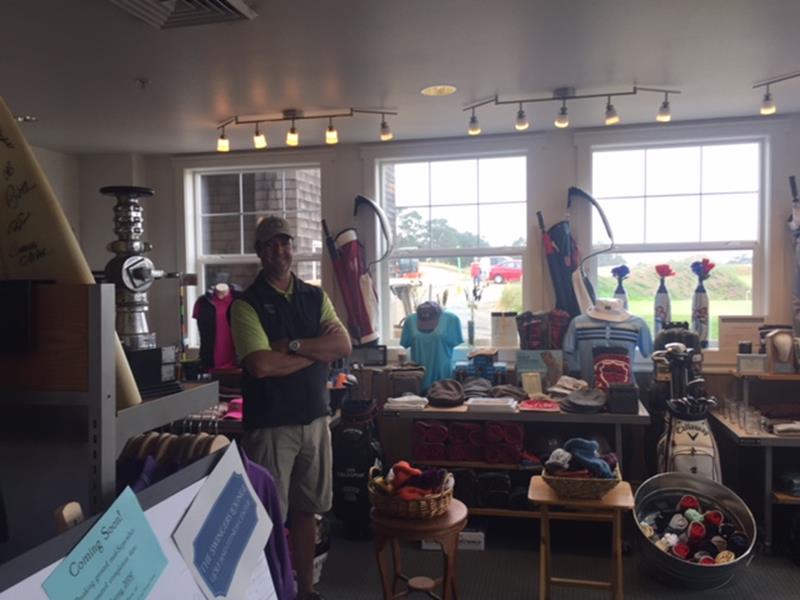In 1989, the designer of a new American golf course called Persimmon Ridge hit the ceremonial first tee shot at the grand opening. As the now-familiar sound of a metal driver hitting a ball rang across the teeing ground, the course’s owner cringed. He was the principal supplier of the persimmon wood used to make drivers and fairway woods, so he was hearing the death knell for his business… even as the golf industry was embarking on an era of global expansion.
Soon after, the persimmon driver had gone the way of the hickory shaft, taking the pro shop into oblivion with it. The move to metal “woods” not only paved the way for China to emerge as the world’s golf club workshop, it helped shift sales of golf equipment out of the green grass pro shop and into sporting goods chain stores. There were more equipment brands to choose from, which meant more expensive floor space was required to display them, all of which worked against the green grass shop. Equipment companies were churning out new clubs at an accelerating pace, hoping to convince golfers that they could buy a better game.

China has made most of the clubs and equipment used worldwide for the last two decades, but its embrace of golf has evolved into less of a hearty hug than a chaste pat on the back. Golf clubs made in China are more expensive to buy there than in overseas markets, and domestic demand in China is weak. (When golf development was thriving in China, an American consultant might travel to China with a new set of clubs and forget to bring them home, leaving them in the hands of a Chinese colleague.)
Meanwhile, in the world’s largest golf economy, the United States, club sales were facing yet another transformation, symbolized by Nike and Adidas’ joint exodus from the golf equipment market. This was both cause and effect of a contraction in sales at sports retailers. Dick’s Sporting Goods, for example, once employed more than 500 PGA professionals, but in the summer of 2014, it fired them all.
The company pointed the finger of blame at TaylorMade, which was trying to replicate the product cycles which stimulate smartphone sales by regularly introducing new club models and pushing them out through the retail chain. The CEO of Dick’s noted that his stores were “selling drivers… for $99 that were approximately $299 twenty months ago.” Dick’s was then the world’s largest vendor of both TaylorMade and Callaway Golf clubs but was still unable to sustain a profitable golf equipment business.
Moore’s law does not apply to golf equipment
Intel founder Gordon Moore noted in 1965 that computer chips were doubling in capacity every 18 months, a trend he correctly predicted would continue. The smartphone you may be reading this on has more computing power than a room full of mainframes had forty years ago. That improvement is so dramatic it has set up expectations for other consumer goods to improve in a similar way.
Golf clubs may try to make similar claims —Longer! Straighter! Easier! — but the comparison is ludicrous. If the latest metal driver was as much improved over a 1980s persimmon model as the iPhone is over an original Mac, Dustin Johnson could hit a golf ball from Ireland to California. Consumers trained by the electronic product cycle will never be satisfied with the marginal improvements in golf clubs, which means eventually they give up trying to buy a better game and stick with what they have.

Stores displaying inventory are free showrooms for internet sellers. People find something they like in a store and then “shop” for it online. Amazon is a parasite taking over its host.
That’s what happened in the golf equipment business. People “shopped” at Dick’s or other retailers, but bought online after checking for the best price.
Pro shops, however, were actually hurt less by this trend than chain stores, because they had given up on stocking clubs. They had already adjusted to the new reality. They didn’t try to compete with Amazon. They might have a putter or two in stock, and always would sell golf balls, but their merchandising wheelhouse had spun away from equipment toward apparel, and even there they focused on specialized categories.
Jason Bangild (see photo below) is a PGA of America Professional who runs a green grass shop as part of his duties as the General Manager of the oldest golf course in the western United States, Gearhart Golf Links on the North Oregon coast. Gearhart is celebrating its 125th anniversary this year. Gearhart is the sister course to Ireland’s youngest renowned links course, Carne Links in County Mayo.
Both courses are in tiny towns on the west coasts of their respective countries, and many of their members live in metropoles to the east: Portland for Gearhart, Dublin for Carne. Members at both courses proudly sport their club’s logo on their gear.

Jason was born and raised in Canada. He played college golf in the US, and before coming to Gearhart was the Director of Golf at Nanea, the ultra-exclusive Hawaiian club with a course designed by David McLay Kidd for the tycoons Charles Schwab and George Roberts. Membership is by invitation only. Columbia Sportswear’s President and CEO Tim Boyle, whose family owns Gearhart Golf Links, is a Nanea member.
Bangild stocks tweed hats from Donegal in his modest but attractive pro shop (see photo below), along with Columbia and prAna (a Columbia brand) shirts, jackets, vests and jumpers, all embellished with the Gearhart Golf Links logo.
“There are three kinds of courses which will sell you golf stuff,” Bangild notes. “A public course, a private course, or a resort course. None of them can compete on price with a franchised golf store or a sporting goods store with golf equipment as one of the types of goods it sells.”

Private clubs stock their shops more for the convenience of members than to make money. Apparel at famous private clubs—US Open venues, for example—sells well to guests, but unlike at European clubs, which welcome visitors, prestigious private clubs in the US don’t encourage outside play. The tiny handful of private clubs which do allow unaccompanied guests, such as Cypress Point, enjoy splendid sales.
Resort courses do much better, Bangild notes, because guests like having a subtle way to announce, “oh, yes, you see by my hat that I was just at Bandon Dunes.”
Bangild’s goal, on the other hand, is to make the Gearhart shop “a comfortable place to visit. And we want to be proud of what we’re selling.” Apparel sales in shops such as Gearhart will never compare in volume to online retailers, but they can produce a steady income if they emulate Bangild’s customer-friendly approach.
IN PART III, we will examine how Columbia Sportswear responded to the challenge of online retailing.
John Strawn is a Director with Global Golf Advisors (GGA), the largest professional advisory services firm dedicated to the business of golf. John can be reached on jstrawn@globalgolfadvisors.com
Your Turn!
What is your advice for pro shops to become profitable and successful?
